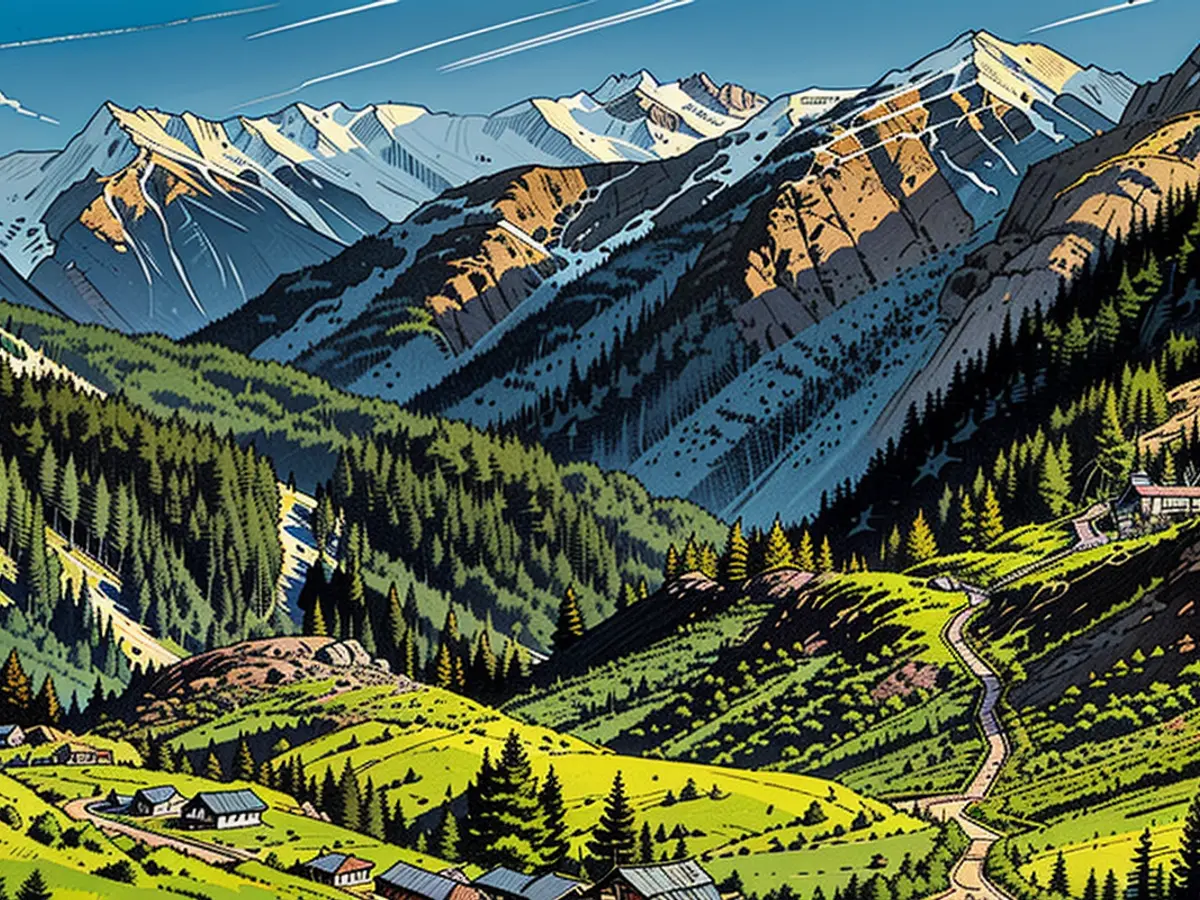Berghütten and Wanderwege are threatening to disappear
In the Alps, due to the frequent storms, rockfalls and rock slides caused by climate change, the road network is being affected. Several huts have to be closed annually due to their poor condition. Sanitation will be costly in the next few years.
According to experts, many huts and trails in the Alps are threatened, among other things, as a result of the climate crisis. "272 shelters and 50,000 km of hiking trails are in a critical condition. They are literally on the verge of disappearing," writes the Austrian Alpine Club (ÖAV) in its justification for an appeal to the government in Vienna.
To repair huts and trails, 95 million euros will be needed in the next few years. The frequent storms, rockfalls, rock slides, and landslides have made the maintenance of the road network more expensive than before. "The costs for this have doubled in the past ten years, and payments from the internal disaster fund have multiplied," said an ÖAV spokeswoman.
The problems are not limited to Austria but affect the entire Alpine region. In Austria, around a handful of huts have to be closed every year, whose repair is too expensive. "If three or four huts give up every year, it doesn't sound like much, but it is an alarm signal," said ÖAV expert Georg Unterberger.
The alpine infrastructure is becoming porous, and some long-distance hiking trails are losing important starting points. In general, the question arises as to why alpine associations, with their voluntary work, which made Austria one of the most popular holiday destinations for hiking, do not receive sufficient public support.
Permafrost thaws
One of the problems is that the permafrost thaws. The ice in the ground acts as a binder. When it thaws, the rock becomes crumbly and slides more easily, the ground settles. Around one-third of the 153 huts and bivouacs of the Swiss Alpine Club SAC could be affected by damage due to this. At the Rothornhutte near Zermatt (built in 1948), the retreating permafrost caused cracks in the walls. "When the ice content in the ground decreases, water flows away, and the ground settles," says Delang. "Then the building can sink at one corner by 20 centimeters and at another corner by 5 centimeters."
In the Bernese Oberland, the Mutthornhutte above Kandersteg had to be closed on around 2900 meters in 2022 due to rockfall danger. A replacement building is planned for 2025 a kilometer further east. In Austria, the Seethalerhutte in the Dachstein Mountains received a modern replacement building some time ago. Generally, the paths to the hut are often more challenging or impassable, as glaciers are no longer passable at their usual locations. Sometimes new paths are created.
One of the main issues with huts, according to Unterberger, is little known to hikers - water scarcity. "It's a common misconception that there's no water problem up in the mountains," Unterberger, who is also an architect, says. "But the opposite is true." Due to the lack of sources, huts rely on water from snowfields or glaciers. However, this is no longer the case. And now, the rain falls mostly during storms, followed by long dry periods. Since the raindrops are pelted against the walls instead of gently falling on the roofs, one must adapt. "There are some huts where we collect rainwater on the facades," Unterberger explains.
For the guests, this has consequences. The trend is towards significant water saving - shower towels instead of showers for overnight guests and dry toilets instead of waterless toilets. Already, a waterless toilet flush costs more than ten Euros when the preparation and disposal of water are included, according to the expert. "We have to go back to simple hygiene."
"But the question is often asked: Is a hut location still justified or do we have to close down completely?" Delang says. "Ten, fifteen years ago, we didn't ask ourselves this question." In planned construction projects, we try to predict the consequences of climate change on the mountain sports significance of the area in 20, 30 years. The size and equipment of the hut will be adjusted accordingly, and a withdrawal is also an option as a last resort. A new hut as a replacement for an existing one costs around four to five million Francs, according to Delang.
Many hikers underestimate the danger of extreme heat. The importance of huts is shown, especially in the summer with its rapidly changing extreme weather conditions. On the one hand, there is a risk of flash floods with landslides and mudslides, on the other hand, dehydration poses a constant danger on hot days above 30 degrees. Winter from the German Alpine Club (DAV) explains, "Many hikers don't take into account the sudden change from cool rainy weather to heat. They only see: nice weather - let's go."
According to the DAV accident statistics, which are published every two years, heart-circulatory problems, often in connection with heat, rank second in the summer season. The most frequent accidents occur regularly due to falls while hiking - often during descent, when hikers are tired. The risk of stumbling is also greater.
Even if the summer has not been as extreme as the previous year with various heat records, the DAV has concerns that huts may have to close again due to water scarcity - like the Neue Prager Hütte in the Nationalpark Hohen Tauern in Austria did last year.
Due to the permafrost thawing and the resulting crumbling of rock, several huts in the Alps, such as the Rothornhutte in Zermatt, are facing structural damage. To address the water scarcity issue in Alpine huts, hikers are encouraged to use shower towels instead of showers and dry toilets, as traditional waterless toilets are becoming increasingly costly.







